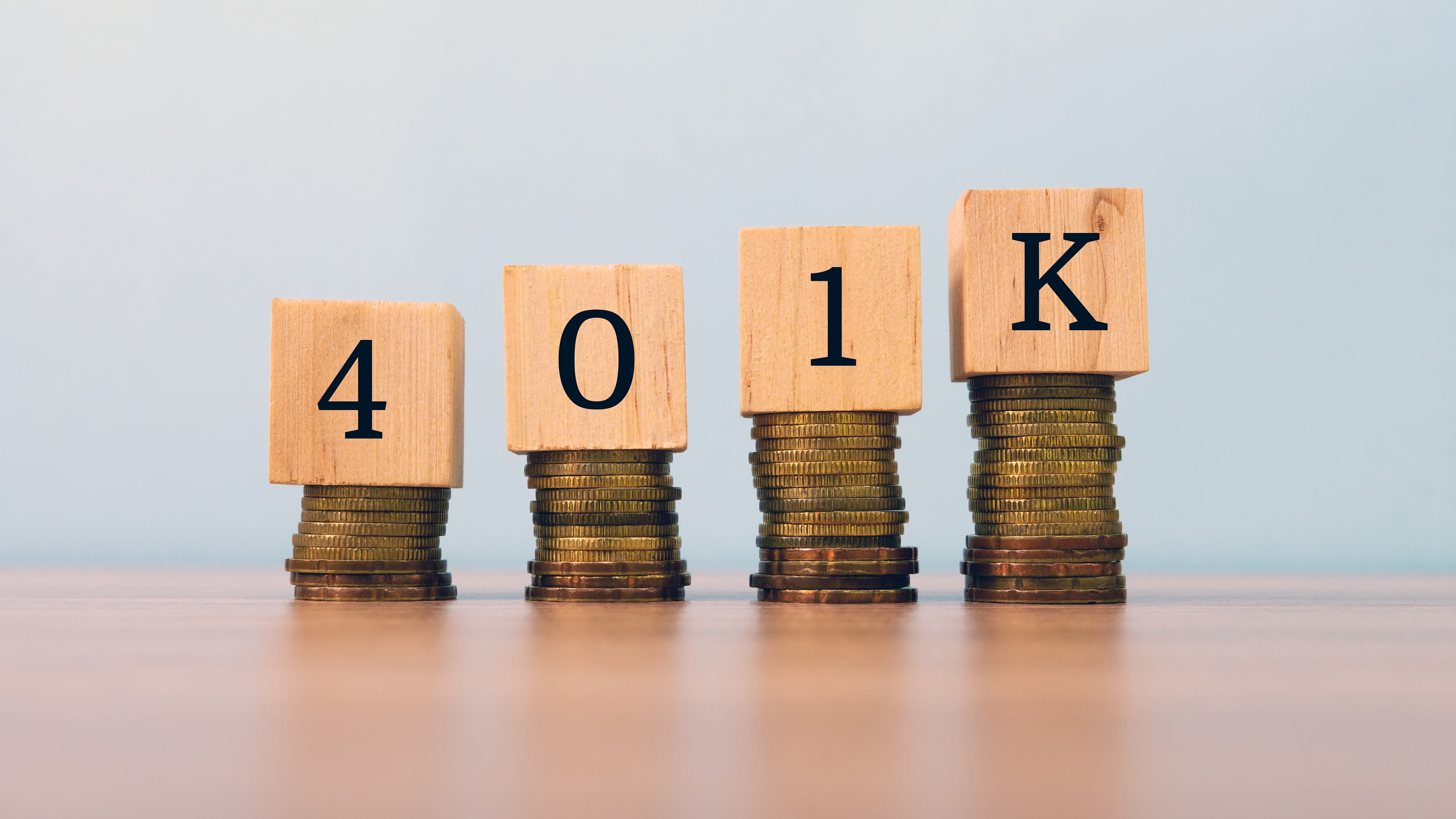SECURE 2.0 Act’s Automatic Enrollment Provision: Pros and Cons
The new legislation requires employers to automatically enroll employees in retirement plans like 401(k)s. What are the benefits and drawbacks?


While the SECURE 2.0 Act is making some key changes to the rules for retirement savings, one of its biggest is to employer-sponsored retirement plans. A new provision will require employers to automatically enroll eligible employees in new plans with a participation amount of at least 3%. Why was the change made? And is it a good money move? Let's break it down.
How Does SECURE 2.0 Act's Automatic Enrollment Work?
Starting in 2025, the SECURE 2.0 Act will require companies with new 401(k) plans to automatically enroll their employees into those plans at a minimum contribution rate of 3%, but no more than 10%. This rate will increase by 1 percentage point each year up to 15%. As an employee, you are not forced to enroll. You still have the option to opt-out of the plan completely or change your contribution rate.
This change applies to most companies, but there are some that are exempt from these new rules. This does not cover small companies with 10 or fewer employees, new companies in business for less than three years or church and government agencies. While small businesses are not required to enroll, there is an incentive for them to do so: They could receive a 100% tax credit of up to $5,000 for any administrative costs as well as up to a $1,000 per employee match for the employer’s contributions to any 401(k) plans.
From just $107.88 $24.99 for Kiplinger Personal Finance
Become a smarter, better informed investor. Subscribe from just $107.88 $24.99, plus get up to 4 Special Issues

Sign up for Kiplinger’s Free Newsletters
Profit and prosper with the best of expert advice on investing, taxes, retirement, personal finance and more - straight to your e-mail.
Profit and prosper with the best of expert advice - straight to your e-mail.
What Are the Benefits?
The bottom line is that Americans simply aren’t saving enough for retirement. According to a Bankrate survey, 55% of Americans say they haven’t saved enough. Since 401(k)s are an essential part of retirement planning, doing all you can to ensure you’re getting the most out of them is important.
The SECURE 2.0 Act is designed to make it easier for anyone struggling to save and put more money away for their retirement. With automatic enrollment, this can also be a benefit for anyone who might procrastinate about enrolling in their employer’s retirement plan.
Not only will automatic enrollment help full-time employees, but the legislation also expands 401 (k) options significantly to include long-term part-time employees. Beginning in December 2024, part-time employees who work at least 500 hours per year in three consecutive years, are eligible to begin making elective deferrals to their employer’s 401(k) plan. Meaning, if part-time employees work at least 500 hours, but less than 1,000, in 2021, 2022 and 2023 they can begin their deferrals as early as Jan. 1, 2024.
What Are the Drawbacks?
While there are many positives about these new provisions, they could present problems for some people. Even with automatic enrollment, many still won’t be saving enough for retirement. Employees have to make sure they are saving more outside of their 401(k) plans.
If you are a low-income earner, automatic contributions might hurt you because you need that money to cover your monthly expenses. While planning for your future shouldn't take a back seat, don't compromise your present if you need that money to pay your bills and everyday expenses.
What Can You Do Now?
Many rely solely on their retirement accounts, whether it's a 401(k) or an IRA, as their primary source of income in retirement. But that might not be enough. The SECURE 2.0 Act aims to help more Americans reach their retirement goals by presenting more options to investors and allowing companies to help their employees improve their retirement plans.
While it has done a lot of good when it comes to options for employees, the question now is the extent investors will integrate these provisions into their own financial plans and how effective employers will be to help them make any necessary adjustments.
Many of the legislation’s provisions won’t be effective immediately, but now is the time to sit down with a financial adviser to determine how the new rules may impact your financial future.
Profit and prosper with the best of Kiplinger's advice on investing, taxes, retirement, personal finance and much more. Delivered daily. Enter your email in the box and click Sign Me Up.

Tony Drake is a CERTIFIED FINANCIAL PLANNER™ and the founder and CEO of Drake & Associates in Waukesha, Wis. Tony is an Investment Adviser Representative and has helped clients prepare for retirement for more than a decade. He hosts The Retirement Ready Radio Show on WTMJ Radio each week and is featured regularly on TV stations in Milwaukee. Tony is passionate about building strong relationships with his clients so he can help them build a strong plan for their retirement.
-
 Gold and Silver Shine as Stocks Chop: Stock Market Today
Gold and Silver Shine as Stocks Chop: Stock Market TodayStocks struggled in Friday's low-volume session, but the losses weren't enough to put the Santa Claus Rally at risk.
-
 Don't Wait Until January: Your Year-End Health Checklist to Kickstart 2026
Don't Wait Until January: Your Year-End Health Checklist to Kickstart 2026Skip the fleeting resolutions and start the new year with a proactive plan to optimize your longevity, cognitive health, and social vitality.
-
 Premium Rewards Cards: More Perks, Higher Fees
Premium Rewards Cards: More Perks, Higher FeesSome issuers are hiking the annual fee on their flagship luxury credit cards by hundreds of dollars. Are they still worth using?
-
 How to Master the Retirement Income Trinity: Cash Flow, Longevity Risk and Tax Efficiency
How to Master the Retirement Income Trinity: Cash Flow, Longevity Risk and Tax EfficiencyRetirement income planning is essential for your peace of mind — it can help you maintain your lifestyle and ease your worries that you'll run out of money.
-
 I'm an Insurance Expert: Sure, There's Always Tomorrow to Report Your Claim, But Procrastination Could Cost You
I'm an Insurance Expert: Sure, There's Always Tomorrow to Report Your Claim, But Procrastination Could Cost YouThe longer you wait to file an insurance claim, the bigger the problem could get — and the more leverage you're giving your insurer to deny it.
-
 Could a Cash Balance Plan Be Your Key to a Wealthy Retirement?
Could a Cash Balance Plan Be Your Key to a Wealthy Retirement?Cash balance plans have plenty of benefits for small-business owners. For starters, they can supercharge retirement savings and slash taxes. Should you opt in?
-
 7 Retirement Planning Trends in 2025: What They Mean for Your Wealth in 2026
7 Retirement Planning Trends in 2025: What They Mean for Your Wealth in 2026From government shutdowns to market swings, the past 12 months have been nothing if not eventful. The key trends can help you improve your own financial plan.
-
 What Defines Wealth: Soul or Silver? Good King Wenceslas' Enduring Legacy in the Snow
What Defines Wealth: Soul or Silver? Good King Wenceslas' Enduring Legacy in the SnowThe tale of Good King Wenceslas shows that true wealth is built through generosity, relationships and the courage to act kindly no matter what.
-
 An Investing Pro's 5 Moves to Help Ensure 2025's Banner Year in the Markets Continues to Work Hard for You in 2026
An Investing Pro's 5 Moves to Help Ensure 2025's Banner Year in the Markets Continues to Work Hard for You in 2026After a strong 2025 in the stock market, be strategic by rebalancing, re-investing with a clear purpose and keeping a disciplined focus on your long-term goals.
-
 Introducing Your CD's Edgier Cousin: The Market-Linked CD
Introducing Your CD's Edgier Cousin: The Market-Linked CDTraditional CDs are a safe option for savers, but they don't always beat inflation. Should you try their counterparts, market-linked CDs, for better returns?
-
 How to Protect Yourself and Others From a Troubled Adult Child: A Lesson from Real Life
How to Protect Yourself and Others From a Troubled Adult Child: A Lesson from Real LifeThis case of a violent adult son whose parents are in denial is an example of the extreme risks some parents face if they neglect essential safety precautions.